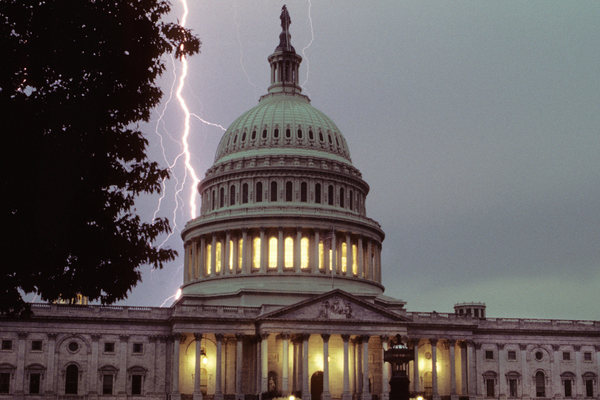
By Tom Loranger, Principal
The political atmosphere in the nation’s capital is never considered amiable, but come September the partisan hostility could sink to new depths. The United States Senate and House of Representatives recently departed Washington for the annual August recess leaving several pressing matters unresolved.
Post-Labor Day, the annual budget will be front and center. The federal government’s “fiscal year” (in this case Fiscal Year 2026) begins October 1. In other words, Congress is supposed to pass its annual budget before October. But that hasn’t happened since 1997.
The term “federal budget” refers to 12 separate spending (or appropriations) bills that fund the various departments and programs that comprise the federal government. This includes everything from the Department of Defense to farm programs. (Note: The “budget” does not include Social Security, Medicare and Medicaid. As they fall under “mandatory” (as opposed to “discretionary”) spending, they are funded automatically each year.)
The respective appropriations committees are supposed to process all 12 bills and then send them to the full House and Senate for approval or rejection. If the House and Senate pass different versions of any of the 12 bills, the two chambers are required to iron out the differences because only then can the bills be forwarded to the President.
To date, the House has passed only two of the 12 bills while the Senate has approved three. Remember, even the bills that have passed the House and Senate must still be reconciled. So, zero appropriations bills have passed a Congress that won’t return until September 2, and the deadline for passing a budget looms on October 1. What could go wrong?
Inevitably, Congress will try to pass what is known as a “continuing resolution” (CR). That is congressional jargon for legislation that continues governmental funding at existing levels for a specified period of time. The CRs “buy time” so Congress (it is hoped) can pass a new budget.
Currently, Republicans control the House, Senate and the White House. The House and the Trump Administration are seeking to pass a more frugal budget (excepting Defense programs) compared to what Senate Republicans seem prepared to support. Keep in mind that the House can pass its legislation with a simple majority (although its current margin for error is scant). However, under Senate rules, the budget bills will require the votes of at least 60 of the 100 members – meaning that at least seven Democrat votes will be required – even IF the 53 Senate Republicans are united.
This foreboding budget scenario doesn’t factor in other contentious issues that are simmering like extending the national debt ceiling (how much the federal government can borrow), processing President Trump’s stalled nominees in the Senate, and codifying some of President Trump’s controversial Executive Orders – not to mention polarizing issues in the background such as Russia/Ukraine, gerrymandering, immigration enforcement and, gulp, the Epstein files.
Enjoy the rest of your summer. If for some reason you enjoy the political warfare in Washington, get out the popcorn; if not, get out the Advil or Tums!

